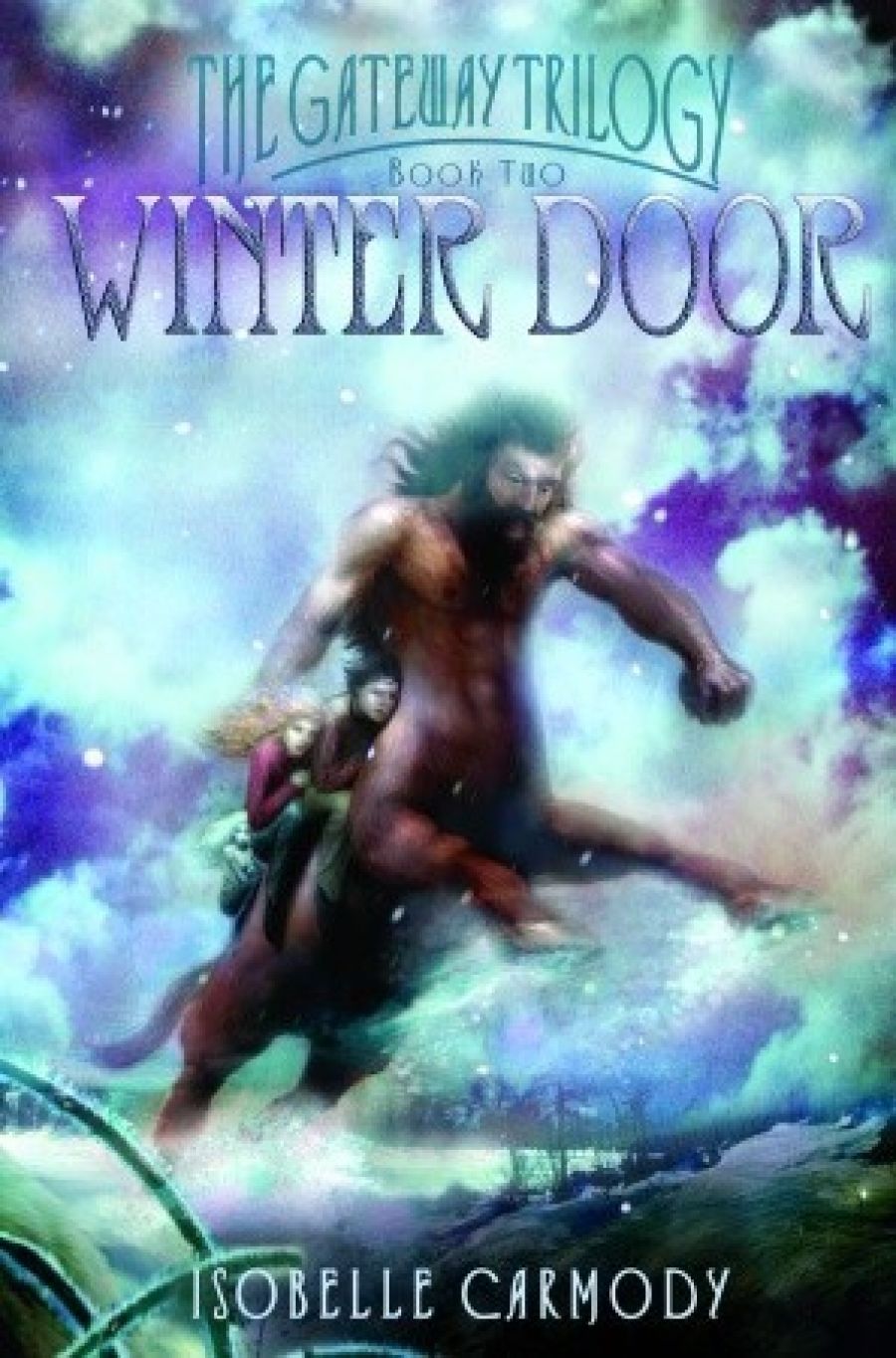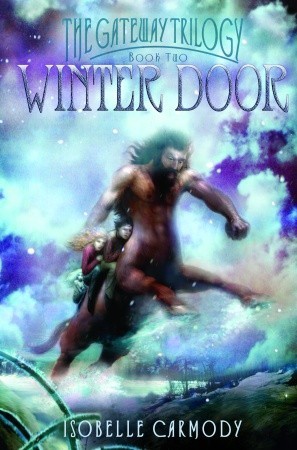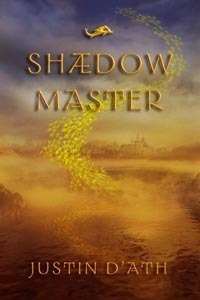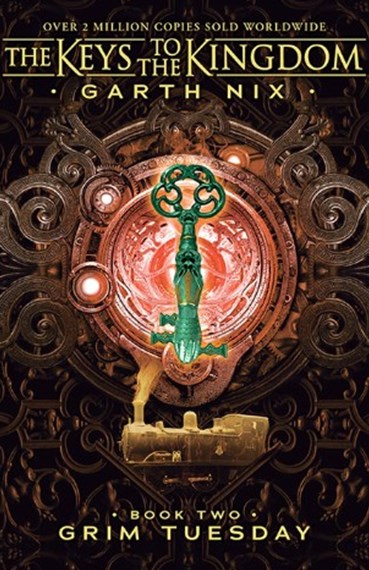
- Free Article: No
- Contents Category: Young Adult Fiction
- Custom Article Title: Young Heroes in Fantastic Settings
- Review Article: Yes
- Article Title: Young Heroes in Fantastic Settings
- Online Only: No
- Custom Highlight Text:
Setting is a particularly important feature in fantasy texts. One of these three fantasy novels for young adults is set in a self-contained world, while the other two have their main character travel from the ‘real’ world into a secondary one.
In Justin D’Ath’s Shædow Master, fourteen-year-old Ora – related to the royal family of Folavia – knows there is a mystery surrounding her. Why was she the only person to survive falling into Quickwater Lake? And why does she have the despised fair hair and blue eyes of the lower-class skiffers, instead of the dark eyes and hair of Folavian aristocracy? Ora’s search for the truth about herself is intricately linked to the destiny of Folavia. The country is in the grip of drought, its people are divided into rigid classes where the rich oppress or ignore the poor, and the ‘history’ being taught by the aristocracy proves to be seriously flawed. Through her courage, compassion and willingness to examine herself, Ora gradually realises the secret that haunts her family, and comes to understand what she must do in order to give Folavia a future.
- Book 1 Title: The Winter Door
- Book 1 Biblio: Penguin, $17.95 pb, 455 pp
- Book 1 Cover Small (400 x 600):

- Book 1 Cover (800 x 1200):

- Book 2 Title: Shædow Master
- Book 2 Biblio: Allen & Unwin, $15.95 pb, 268 pp
- Book 2 Cover Small (400 x 600):

- Book 2 Cover (800 x 1200):

- Book 3 Title: Grim Tuesday
- Book 3 Biblio: Allen & Unwin, $14.95 pb, 290 pp
- Book 3 Cover Small (400 x 600):

- Book 3 Cover (800 x 1200):

Shædow Master is exquisitely crafted and sings with respect for life and the natural world. It is rich in allegory and myth, seamlessly woven into the text, and Folavia itself is a credible and consistent setting. Traditional European fairy-tale elements, such as the castle and the royal family, are combined with themes that will resonate with many Australian readers. Ora’s realisation about what the drought is doing to Folavia’s unique wildlife, and her gradual understanding of the damage done by the false teaching of history – with its claims that Folavia was ‘founded’ two hundred years ago by Adamo the Wanderer – make Shædow Master a highly pertinent text to Australia in 2004, as well as a fabulous read.
Garth Nix’s Grim Tuesday – second in The Keys to the Kingdom series – has a much more urban feel. It plunges straight into the world of Grim Tuesday, and its opening chapter provides a neat synopsis of the preceding novel, Mister Monday (2003). Giving enough detail of the previous book in a series for those who have not read it, without putting off those who have, is a perennial problem for the series writer. Nix handles it well, working the summary of Mister Monday into the establishment of Grim Tuesday’s character.
After meeting Grim Tuesday, we encounter Arthur Penhaligon, the reluctant hero who previously vanquished Mister Monday and saved our world from the Sleepy Plague. Arthur learns that Grim Tuesday plans to collect debts owed to him by Mister Monday and is prepared to wreak havoc on world finances in order to do so. Already Arthur has seen servants of the Grim in our own world, and realises the only way to stop Grim Tuesday is to return to the mysterious House. We learn much in Grim Tuesday about the House, and these details create a convincing and engrossing secondary world.
Arthur’s adventures bring him into contact with a host of intriguing characters. The practical and courageous Suzy Turquoise Blue, who also appears in Mister Monday, has a touch of Dickensian cockney about her, as well as her own particular ingenuity. Japeth, the Thesaurus Minimus Grade Two, will delight readers who enjoy playing with language. But one of the greatest triumphs is Soot, Grim Tuesday’s escaped left eyebrow, who offers Arthur help in his quest while gaining assistance for his own. All up, Grim Tuesday is a lively, original and entertaining fantasy.
The words ‘gentle’ and ‘beautiful’ were the ones that came to mind as I read Isobelle Carmody’s The Winter Door, the second book in The Gateway Trilogy. Twelve-year-old Rage Winnoway lives on a farm with her reclusive Uncle Samuel, as her mother is ill in hospital. It is wintertime, and the weather is particularly harsh. Rage (real name: Rebecca Jane) learns that the bad weather is caused by the strange winter-destroying Valley, the world to which Rage travelled in Billy Thunder and the Night Gate (2000). Rage dream-travels back to Valley to help defeat the Stormlord. The plot’s resolution involves a sensitive reworking of a classical myth.
I haven’t read Billy Thunder and the Night Gate, but had no real trouble in following The Winter Door. Rage’s thoughts about Billy Thunder explain what happened during their previous journey to Valley, as does Rage’s understanding of what she has learned from that trip. Valley works well as a secondary world, with a clever tie-in to A Midsummer Night’s Dream (which Rage’s class is studying at school).
Carmody has also created a troupe of memorable supporting characters, including the bully Logan – who reforms to become Rage’s close friend – the spitting firecat, the sentient city of Fork, and the lovable, courageous Billy Thunder himself. I had a slight quibble with Rage’s portrayal, given her age, especially in the early stages of the novel. There seemed to be a discrepancy between Rage’s school year and her apparent age when away from school: some of her attitudes towards authority suggested either a younger person, or the sort of twelve-year-old who featured in the fiction I read as a child in the 1970s. This would have been less of a problem had there not been a reference to the 1976 film Logan’s Run as an ‘old sci-fi movie’ and what sounds like an allusion to the 1993 murder of James Bulger, both of which fix the novel’s setting within a specific time period.
Nonetheless, there is much to praise about The Winter Door, including a passage that should be obligatory reading for any teacher who has tried unsuccessfully to explain to a recalcitrant English class the value of studying Shakespeare. The development of Logan and Rage’s friendship is cleverly handled, and Logan’s ways of dealing with his illiteracy are sensitively and convincingly portrayed. Rage’s perception of herself as different – and her schoolmates’ misinterpretation that she sees herself as superior – is a scenario sadly familiar to a number of children, and it is good to see it explored so thoughtfully.
I recommend The Winter Door to keen fantasy readers between the ages of about nine and twelve, especially those who love animals and who enjoy getting lost in a long, evocative novel.


Comments powered by CComment